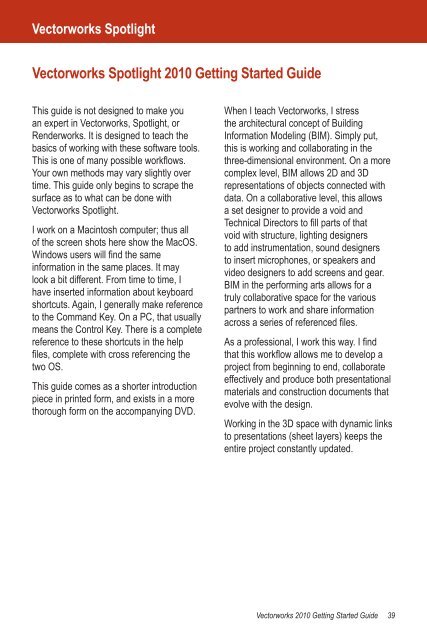
(The Dutch architects, I believe, use centimeters, though.) Nevertheless, we have to pay homage to some medieval units of measurement and learn the intricate rites of conversions. Scaling factors are easy, should they ever be needed. If something is not in millimetres, it is in metres. Here in the modern, civilized world there is little guesswork even for AutoCAD users. It is totally impartial and does not assume that a user knows what an obsolete unit (inch, palm, cubit, Russian verst) might be or that there even is such a unit. While perhaps less useful and appealing, the AutoCAD approach is also less "imperialistic". What is surprising is that the situation has never been rectified, not even in major rewrites.

Now, if the "CV project at the kitchen table" -legend of the mythical origins of MiniCAD is true, this is not suprising. Vectorworks Viewer is a comprehensive and effective 3D file viewer especially designed for users who need to view and analyze Vectorworks projects within seconds, regardless of their size. It is just ignorance ("What do you mean you don't know what an inch is?"). I don't even think there would be a malicious intent ("Well, 95% of the world uses metric system so just to make the lives of the bastards miserable, I'll use inches as default").
#Vectorworks viewer units software#
Is it so unexpected that software written in the US chooses inches as a default when importing a file? In AutoCAD, you have to take your objects and scale them up by 25.4 if they were originally created in inches. The advantage to the VW user is that to get dimensions to read in millimeters, one has only to change the units preference. This probably goes way back to the first MiniCAD version. I suspect that in every VW file, all objects are at their root stored in inches, and then translated at the user interface when a different unit is selected. Is it so unexpected that software written in the US chooses inches as a default when importing a file? After all, there has to be SOME default. That would never happen in a VW -> VW transaction. I almost always have to scale a surveyor's drawings by 1/12, for example, or a IU-based manufacturer's details by 1/25.4 (again, I'm talking about AutoCAD -> AutoCAD).

You have the same problem in AutoCAD itself when opening an AutoCAD drawing supplied by a consultant. Yes, VW does interpret those numbers as "inches" unless you choose otherwise, but it is AutoCAD that fails to supply any real-world context to its dimensions. VW takes in the raw numbers, which in an AutoCAD file are not linked to any particular scale. Petri is correct in his analysis and advice - however, the fault is not with NNA, it's with AutoCAD. But what the heck: you can scale objects/entire drawing by typing "1/25.4" to the dialog. If you want to use metric values for the exercise steps, enter the values exactly as shown in square brackets, with the unit mark, and Vectorworks will convert the values accordingly. NNA believes that the world is measured in inches, unless specifically told otherwise. Using Metric Units with Exercises All exercise data set files for this tutorial are set to use imperial units. That usually means that everything is scaled by a factor of 25.4 since a certain Mr. Select the Use at Creation option to automatically apply the class settings when you create new dimensions.ĭimension markers are always controlled by the dimension standard they cannot be changed from the Attributes palette or the Dimension class properties.Good luck.

Edit the class to set a default pen style, color, and thickness, as well as a text style for dimensions (see Setting Class Properties). The units and precision for all dimension measurements in a file are controlled by the document unit settings (see Units).ĭimensions are automatically placed in the Dimension class. If you change the default dimension standard, new dimensions will use that standard, but no existing dimensions are affected. Select any of the built-in dimension standards, or create a custom standard. When a dimension tool is active, you can also set the default dimension standard from the Tool bar. When you add a new dimension, the dimension standard set in the document preferences is used by default (see Document Preferences: Dimensions Tab).

There are also Tape Measure and Protractor tools to measure distances and angles, and a Center Mark tool to mark the center of circles, ovals, and rectangles. Dimensions can be created on a design layer, or in the annotation space of a sheet layer viewport (see Creating Annotations for Sheet Layer Viewports ). Use the various dimensioning tools to measure 2D and 3D objects, and to add dimensioning lines and measurements to the drawing.


 0 kommentar(er)
0 kommentar(er)
